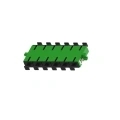Understanding the Control Method

Control method of lateral tension and longitudinal tension of indoor optical cable plays a crucial role in ensuring the proper functioning and longevity of optical cables. Lateral tension refers to the force exerted on the cable in a perpendicular direction to its axis, while longitudinal tension refers to the force applied along the length of the cable. It is imperative to control both types of tension to prevent damage and ensure optimal performance. This article will provide a comprehensive overview of the control methods for lateral and longitudinal tension in indoor optical cables.
Control Method for Lateral Tension
To control the lateral tension in indoor optical cables, several key factors must be considered:
Adequate Cable Routing: Proper cable routing is essential to minimize lateral tension. Cables should be installed in a way that minimizes bends, kinks, and lateral force. Excessive bends can increase the lateral tension, potentially leading to cable damage and signal loss. Careful planning and adherence to recommended installation guidelines are crucial in maintaining the integrity of the cable.
Use of Cable Support Systems: Cable support systems, such as cable trays or racks, can significantly reduce lateral tension. These systems provide a stable and secure pathway for the cables, preventing excessive lateral movement. By eliminating sagging and limiting lateral force, the risk of damage is greatly reduced.
Tension Relief Devices: In situations where cable movement is unavoidable, tension relief devices can be employed. These devices act as shock absorbers, mitigating the lateral tension during cable movement. Tension relief devices can help safeguard the cable from external forces, ensuring its longevity and performance.
Control Method for Longitudinal Tension
The control of longitudinal tension in indoor optical cables is equally important:
Proper Cable Length Estimation: Accurate estimation of cable length is crucial to avoid excessive longitudinal tension. A slack or redundant length of cable should be provided during installation to accommodate any future changes or movements. This additional length can absorb the longitudinal tension without compromising the cable's structural integrity.
Effective Cable Management: Proper cable management is essential to control longitudinal tension. Cable ties, clamps, or lacing cords can be used to secure the cable along its route. These management tools distribute the tension along the cable, preventing excess stress at any specific point. Additionally, they minimize cable movement, reducing the risk of damage due to longitudinal tension.
Regular Inspection and Maintenance: Regular inspection and maintenance are key to detecting and rectifying any potential issues related to longitudinal tension. Periodic checks of cable tension levels, along with the identification and resolution of loose or damaged cables, can greatly enhance the longevity and performance of indoor optical cables.
Conclusion
Controlling the lateral and longitudinal tension of indoor optical cables is of utmost importance to ensure their optimal functioning and durability. Adequate cable routing, the use of cable support systems, tension relief devices, proper cable length estimation, effective cable management, and regular inspection and maintenance are all crucial control methods. By implementing these techniques, the risk of cable damage, signal loss, or performance degradation can be minimized, resulting in a reliable and efficient network infrastructure.



